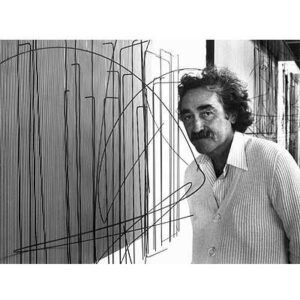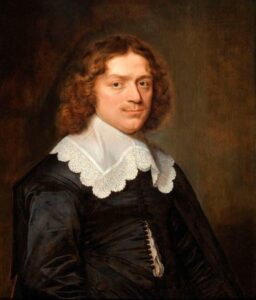El Greco- Introduction: At a glance
El Greco, also known as Doménikos Theotokópoulos, is a celebrated artist whose work had a profound impact on the art world during the Spanish Renaissance. With his unique artistic vision and distinctive style, El Greco created a lasting legacy that continues to captivate audiences to this day. Here is a brief introduction to El Greco’s life and artistic achievements.
El Greco was born around 1541 in Fodele, Crete, and little is known about his early life and artistic training. He likely received training in the Byzantine tradition, which emphasized religious iconography and symbolism. In his twenties, he traveled to Venice, Italy, where he immersed himself in the vibrant artistic scene and studied the works of renowned masters like Titian and Tintoretto. This period in Italy greatly influenced his artistic development and marked the beginning of his distinctive style.
In the late 1570s, El Greco settled in Toledo, Spain, where he spent the majority of his career. It was in Toledo that he received significant commissions from religious institutions and the Spanish court, solidifying his reputation as a master artist. His works often revolved around religious themes, with intense emotional expression and a unique treatment of light and color.
El Greco’s style is characterized by elongated figures, dramatic lighting, and vibrant colors, creating a sense of spirituality and otherworldliness. His paintings captured the essence of religious devotion and conveyed a profound sense of emotion, making a lasting impact on viewers.
Despite the limited information available about his personal life, El Greco’s artistic legacy speaks volumes. His unique style and expressive interpretations of religious subjects set him apart from his contemporaries, making him one of the most significant artists of the Spanish Renaissance.
El Greco’s influence can be seen in the works of subsequent artists, and his contributions to art continue to be celebrated in major museums and galleries worldwide. His masterful paintings are a testament to his unwavering passion, distinct artistic vision, and lasting impact on the art world.
El Greco- 3 Frequently asked questions
If I want to know everything about this Mannerism artist, then which category should I select to this?
If you want to know everything (Biography of El Greco) means basic things about El Greco, then you should know the following items:
Type El Greco Wikipedia and read these sections: Suggested Byzantine affinities, The Burial of the Count of Orgaz (1586–1588) & El Expolio (1577–1579)
You may also search: (El Greco artandcrafter.com). Our website would give you information– Biography of El Greco, short notes of El Greco, etc.
What are some interesting facts about El Greco?
10 lines Wikipedia
What do you love and hate the most about El Greco? – YouTube Summary.
This categorization has been done according to Wikipedia data:- (Mannerism + El Greco)
If you find something wrong about El Greco, you may contact us through our comment section.
El Greco is the artist of Mannerism movement, and this comparison has been made with these artists- Camille Pissarro, Caravaggio, Carel Willink, Edvard Munch, and Georges Seurat.
And also you can compare artworks such as “The Burial of the Count of Orgaz,” “View of Toledo,” “The Disrobing of Christ,” “Opening of the Fifth Seal” and “The Adoration of the Shepherds (El Greco, Madrid)” with other Mannerism artists.
Everything is given on this website: Search, read, and compare!
Other artists
El Greco (1541-1614) was a prominent artist of his time and had a unique style that set him apart. While there are no direct artists who can be considered his contemporaries or immediate influences, some artists of later periods were inspired by his work. Here are a few artists who were influenced by El Greco:
- Francisco de Goya (1746-1828): Goya, a renowned Spanish painter, drew inspiration from El Greco’s use of bold brushwork and expressive style in his own works.
- Edvard Munch (1863-1944): Munch, a Norwegian painter, was influenced by El Greco’s expressive use of color and his ability to convey intense emotions in his paintings.
- Wassily Kandinsky (1866-1944): Kandinsky, a Russian painter and art theorist, was fascinated by El Greco’s spiritual and mystical qualities, which played a role in shaping his own abstract art.
- Jackson Pollock (1912-1956): Pollock, an American abstract expressionist painter, admired El Greco’s unconventional and experimental approach to composition and brushwork.
While these artists were not direct contemporaries of El Greco, they were influenced by his unique style and artistic expression, incorporating elements of his approach into their own works.
El Greco- Personal life
El Greco, born Doménikos Theotokópoulos, remains an enigmatic figure, and details about his personal life are scarce. Nevertheless, piecing together fragments from historical records and art historical research, we can gain some insights into the life of this masterful artist.
Born around 1541 in Fodele, Crete, El Greco’s early life remains shrouded in mystery. Little is known about his family background or early education. It is believed that he received training in the Byzantine tradition, which emphasized religious iconography and symbolism.
In his twenties, El Greco embarked on a transformative journey to Italy, where he settled in Venice. There, he immersed himself in the vibrant artistic scene and studied the works of renowned masters such as Titian and Tintoretto. This period of his life was instrumental in shaping his artistic style and techniques.
In the late 1570s, El Greco arrived in Toledo, Spain, and established himself as a prominent artist. It is suggested that his move to Toledo was driven by a desire to secure commissions from influential patrons and pursue artistic opportunities. His unique style, marked by elongated figures and dramatic lighting, garnered attention and patronage from religious institutions and the Spanish court.
Despite the limited information available about El Greco’s personal life, he is known to have had a son named Jorge Manuel Theotocópoulos, who became an artist and worked closely with his father. Jorge Manuel played a significant role in assisting El Greco in the production of his artworks.
The mysterious aspects of El Greco’s personal life have fueled speculation and intrigue. However, it is the enigma surrounding his persona that has allowed his art to take center stage, capturing the imagination of art enthusiasts for centuries.
El Greco- Life

- Early Life and Training: El Greco was born in Crete, then part of the Republic of Venice. He received training as an icon painter in the Byzantine tradition and later studied under Italian artists in Venice.
- Move to Spain: In the late 16th century, El Greco relocated to Toledo, Spain, where he spent the majority of his career. Toledo was a center of artistic and religious activity, offering him opportunities to work for prominent clients.
- Style and Artistic Vision: El Greco developed a unique artistic style characterized by elongated figures, vibrant colors, and expressive brushwork. His works often featured religious and spiritual subjects, reflecting his devout Catholic faith.
- Patronage and Commissions: El Greco gained the favor of influential patrons, including King Philip II of Spain. He received numerous commissions for religious paintings, altarpieces, and portraits, allowing him to establish himself as a respected artist.
- Controversy and Criticism: El Greco’s unconventional style and departure from naturalistic representation faced criticism from some contemporaries. However, his artistic vision and originality would later be appreciated by subsequent generations.
- Legacy and Influence: El Greco’s works had a profound impact on later artists, particularly the Expressionists and the Cubists. His unique use of color, lighting, and form paved the way for modern art movements.
- Posthumous Recognition: Following his death, El Greco’s work gradually fell into obscurity until a revival of interest occurred in the late 19th century. He is now regarded as one of the great masters of the Spanish Renaissance and is celebrated for his contributions to European art.
El Greco’s artistic legacy continues to inspire and captivate audiences with its spiritual depth, distinctive style, and expressive qualities. His works are admired for their emotional intensity, dramatic compositions, and his innovative approach to painting.
You would know the following things
In this article: You would know the following things- Categories:
Biography | Notes | Artworks:- In this article, you would read the biography of El Greco, El Greco short notes along with top artworks. This page would provide you with El Greco history that is very easy to read.
Life, paintings | contribution:-
This article covers the whole life of El Greco in one go, the main contribution of this Mannerism artist, famous paintings such as “The Burial of the Count of Orgaz,” “View of Toledo,” and “The Disrobing of Christ”.
Short notes | Know everything:-
If you are a/an Mannerism student and there is a requirement to study everything such as Mannerism history, artists of Mannerism, their main contribution along with their comparison. Then this article on El Greco is perfect for you.
Facts | Overview | whole life:-
This article summarizes the life of this Mannerism artist through YouTube video. Artworks of El Greco have been demonstrated in this article. Information is in video form.
El Greco- Art
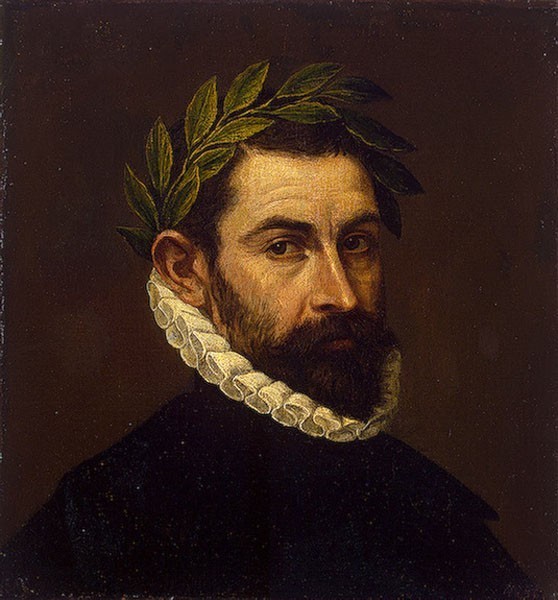
- Mannerist Style: El Greco’s style is often associated with Mannerism, a late Renaissance movement. His paintings display elongated figures, exaggerated poses, and vibrant, non-naturalistic colors.
- Expressive and Spiritual Vision: El Greco’s works convey a deeply personal and spiritual vision. He often depicted religious subjects, emphasizing the intense emotions and spiritual intensity of his figures.
- Dramatic Lighting and Composition: El Greco employed dramatic lighting effects, using chiaroscuro to create a sense of depth and highlight important elements in his compositions. His use of unconventional perspectives and complex compositions added to the dramatic impact of his paintings.
- Unique Treatment of Space: El Greco’s paintings often feature distorted and elongated figures, creating a sense of ethereal and otherworldly space. This unique treatment of space adds to the mystical and visionary qualities of his art.
- Bold and Expressive Brushwork: El Greco’s brushwork is characterized by its boldness and expressiveness. He employed visible brushstrokes and impasto technique, adding texture and vibrancy to his paintings.
- Influence on Modern Art: El Greco’s unique style and visionary approach had a significant impact on modern art movements, particularly on Expressionism and Cubism. Artists like Pablo Picasso and Jackson Pollock were influenced by his unconventional techniques and spiritual depth.
Some notable works by El Greco include “The Burial of the Count of Orgaz,” “View of Toledo,” “The Assumption of the Virgin,” and “Christ Driving the Money Changers from the Temple.”
El Greco’s art continues to captivate viewers with its distinctive style, spiritual intensity, and dramatic compositions. His works remain highly regarded and influential in the history of Western art.
El Greco- Relation with Mannerism
The artworks of this Mannerism artist explore the relationship between celebrity culture and artistic expression.
El Greco is a leading figure among the artist of Mannerism, and there are so many artworks such as “The Burial of the Count of Orgaz,” “View of Toledo,” “The Disrobing of Christ” wherein El Greco had also played important role passively.
El Greco questioned the distinction between everyday objects (Related to other Mannerism paintings) and art objects (Related to Mannerism movement).
The artworks of this artist show attributes of Impressionism, Romanticism, Surrealism.
Because Impressionism has given intellectual support to this artist and Romanticism provides subject matter, and Surrealism gives the way of artistic expression to the El Greco.
El Greco is counted among the pioneers of this Mannerism art movement.
Because this artist has given many artworks such as “The Burial of the Count of Orgaz,” “View of Toledo,” “The Disrobing of Christ,” “Opening of the Fifth Seal” and “The Adoration of the Shepherds (El Greco, Madrid)” etc.
Artworks of El Greco represent the deep connection between Mannerism and other art movements.
The later work of this Mannerism artist represents societal and artistic subjects.
Some people say that El Greco had dedicated Mannerism career to advertising and commercial art.
And when this artist got success in Mannerism art movement then came back to the artistic world. “The Burial of the Count of Orgaz” is another notable work (contributory) of this artist.
This article name is– El Greco – Life, paintings, contribution, death- Easy explanation.
1. Surrealism
Art movement of the 20th century. Explored the irrational and subconscious, combining dreamlike imagery and unexpected juxtapositions.
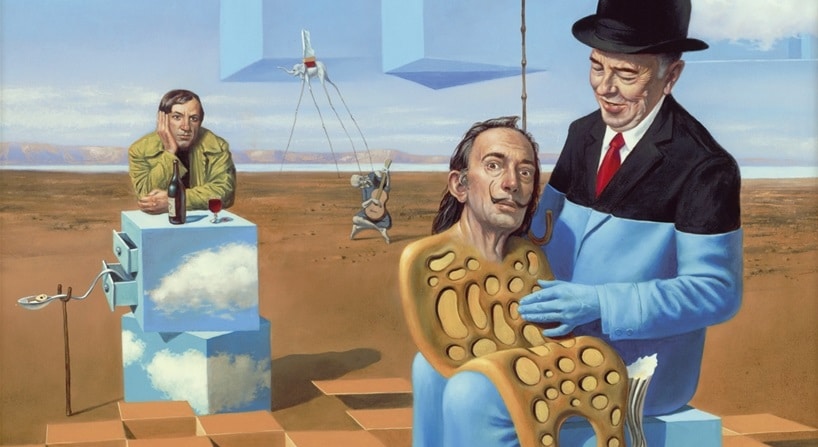
2. Impressionism
19th-century art movement characterized by capturing fleeting moments of light and color through loose brushwork and emphasis on visual impressions.
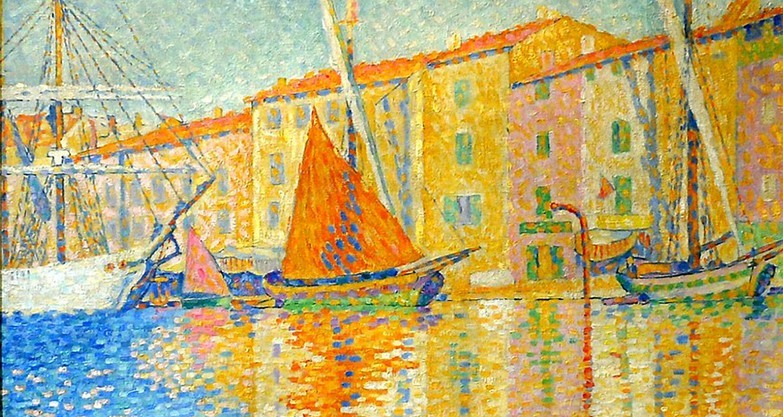
3. Romanticism
19th-century artistic and intellectual movement emphasizing emotion, imagination, individualism, and a connection to nature.

El Greco- Paintings/Artworks
1. The Burial of the Count of Orgaz
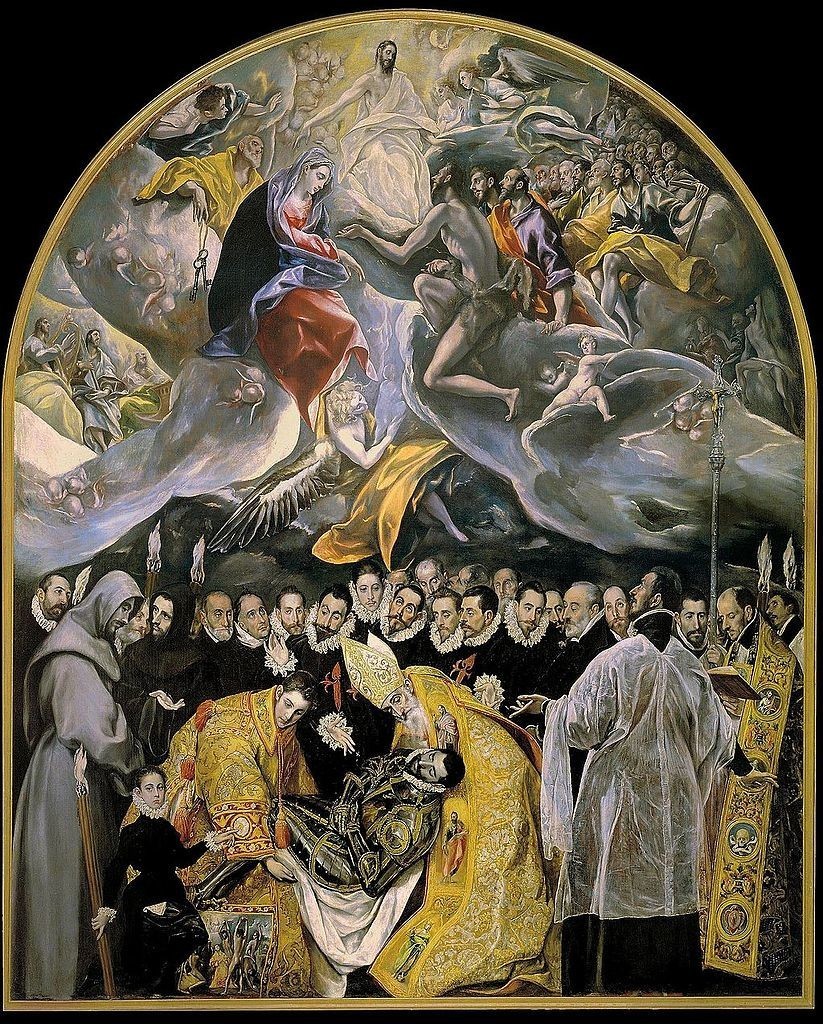
El Greco had made this attractive artwork which name is “PAINTOS,” and the creation date of this artwork is DATOS. The genre of this painting is- GENROS. It is a costly painting in this category…
2. View of Toledo
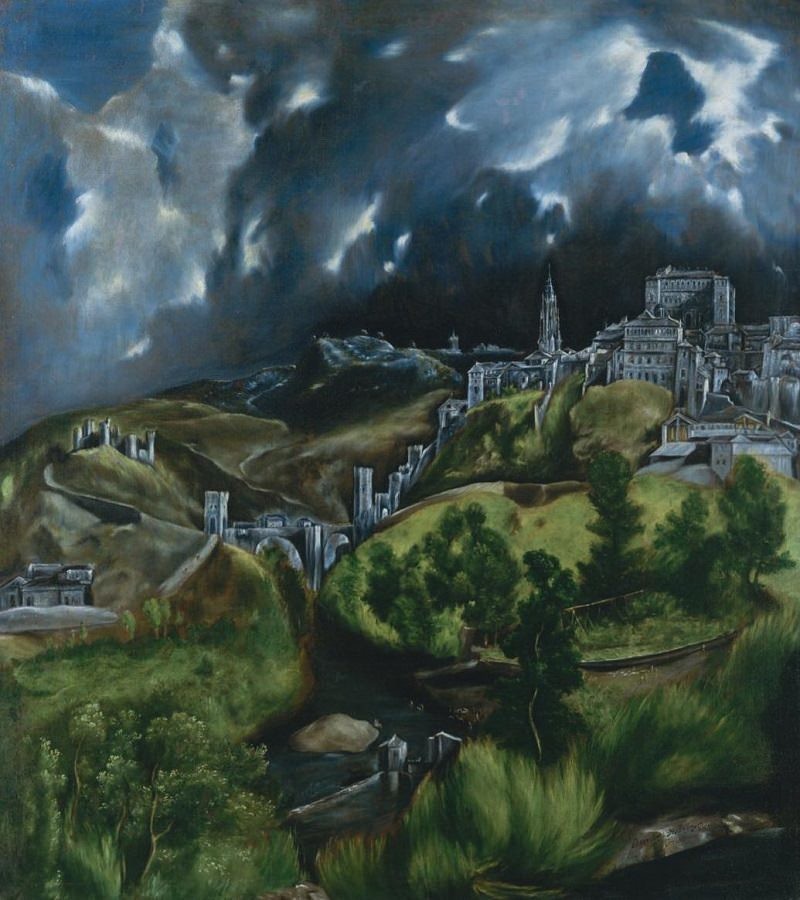
El Greco had made this attractive artwork which name is “PAINTOS,” and the creation date of this artwork is DATOS. The genre of this painting is- GENROS. It is a costly painting in this category…
3. The Disrobing of Christ

El Greco had made this attractive artwork which name is “PAINTOS,” and the creation date of this artwork is DATOS. The genre of this painting is- GENROS. It is a costly painting in this category…
4. Opening of the Fifth Seal

El Greco had made this attractive artwork which name is “PAINTOS,” and the creation date of this artwork is DATOS. The genre of this painting is- GENROS. It is a costly painting in this category…
5. The Adoration of the Shepherds (El Greco, Madrid)

El Greco had made this attractive artwork which name is “PAINTOS,” and the creation date of this artwork is DATOS. The genre of this painting is- GENROS. It is a costly painting in this category…
El Greco- Other artists of this Art Movement
Both options are available: Our website artandcrafter.com and Wikipedia.org
| El Greco | Artandcrafter.com | Wikipedia.org |
| Tintoretto | Artandcrafter.com | Wikipedia.org |
| Pontormo | Artandcrafter.com | Wikipedia.org |
| Bronzino | Artandcrafter.com | Wikipedia.org |
| Parmigianino | Artandcrafter.com | Wikipedia.org |


